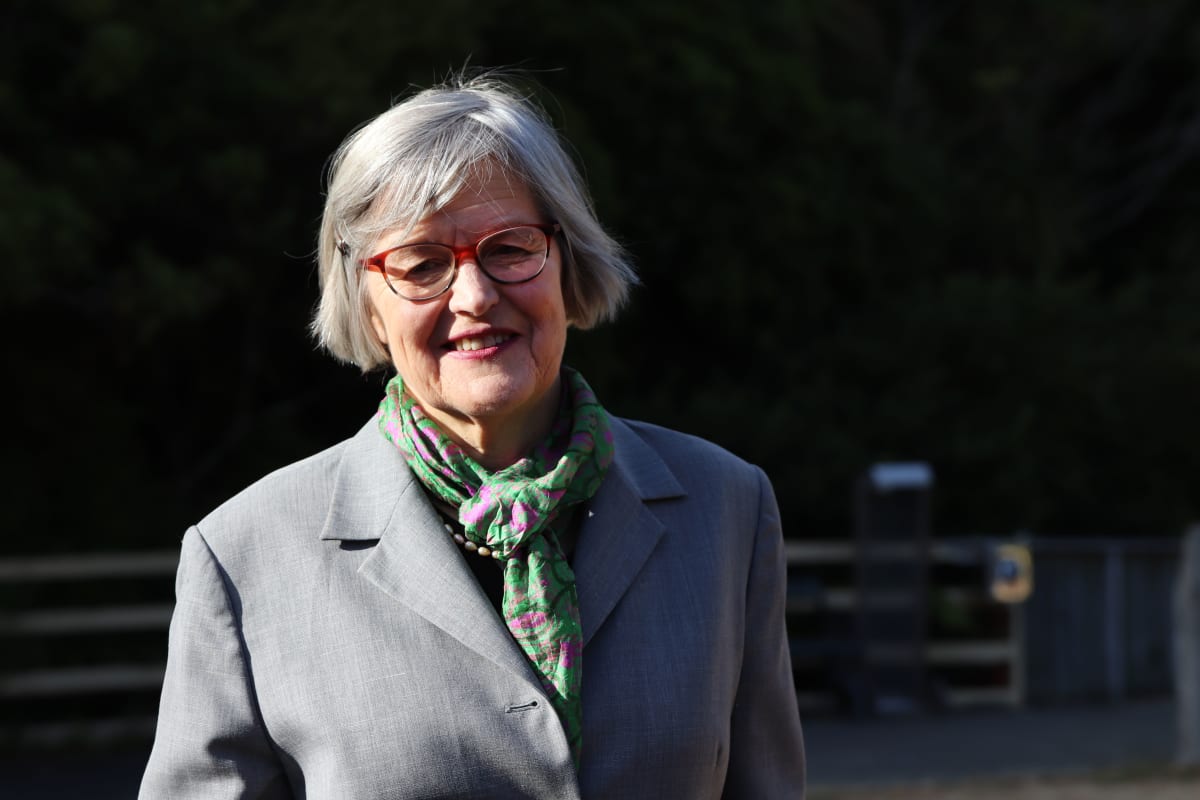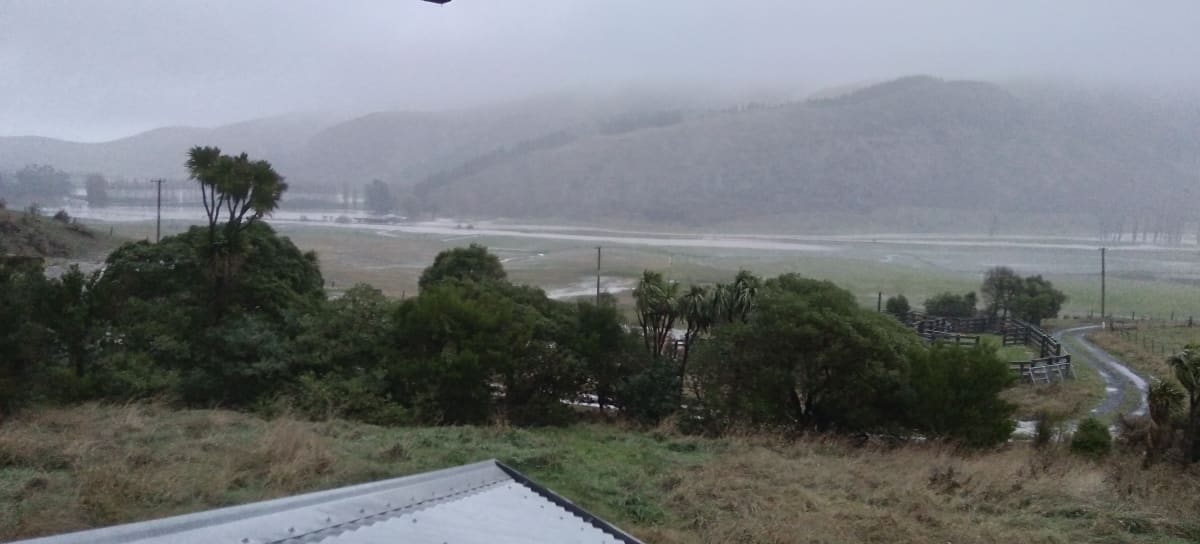
Public opposition builds against plans to build huge cattle sheds near Christchurch. David Williams reports
The planets aligned earlier this week above a rural valley between Christchurch and Akaroa.
Tomm Stanley, a self-confessed astronomy geek who lives at Kaituna Valley, trained his telescopes on the sky to observe a conjunction of Mars, Venus, Saturn and the moon. “It was a stunning sight,” he tells Newsroom.
Across the road, however, Stanley, originally from Florida in the United States, is dealing with a problem that has rocked his world – and he won’t need a telescope to see it.
Late last year, it emerged the Christchurch City Council had granted a non-notified consent for Banks Peninsula farm company Wongan Hills to build two 200m-long composting feed barns, to house up to 2200 cattle.
Planning commissioner David Mountfort determined the effects of the barns – each 12,000m², which breaches the council’s district plan rules for the maximum building footprint of 300m², plus earthworks and building coverage rules – would be minor.
The closest houses are less than a kilometre away. One is Stanley’s; the other, just 700m away, is owned by Cherie Trotter. Neither were notified, as Mountfort ruled there were no affected parties.
“The thing came out of the blue,” says Stanley, a management consultant specialising in parts and service operations in the motor industry. He bought the house in 1996 because it was on Banks Peninsula, close to the city, for its rural aspect.
Stanley says he accepts he lives next to a large commercial farm, but what’s proposed is a world apart. “Putting industrial-size buildings out in this basically quiet, rural environment – it’s so out out of place.”
Trotter, who has lived in the valley since 1994, says from the house’s elevated perspective the “expansive” roofs of the 15m-high sheds will be visible from every west-facing window. (Mountfort’s decision noted additional “visual mitigation” by stacking large rectangular hay bales four metres high, in a shelter belt gap, while trees will mature to fill the gaps “after seven-to-10 years”.)
Other effects include carbon emissions from trucks, and greenhouse gas emissions from the animals, which seem to fly in the face of the declaration, from the city and regional councils, of a climate emergency, she says.
“I would imagine there’s just going to a constant drone of noise and machinery, and the operation of intensive farming.”
The opponents would like a judicial review of Mountfort’s decision – and for the city council to pay for it.

Wongan Hills owner Brent Thomas says composting barns aren’t uncommon in an agricultural environment.
“If you spent a day driving round Mid-Canterbury you would see many large agricultural complexes such as chicken sheds, packing sheds, hay sheds, grain drying sheds, potato storage sheds, silos, loafing barns, dairy stall sheds and composting barns.”
Thomas maintains the barn system to be adopted – 100 percent composting, which is different to what was originally proposed – has “no effects”. “In short, no bobby calves, no nutrient leaching, no odour, excellent animal welfare, and increased jobs and export dollars.”
The feedlot proposal isn’t a fait accompli. It still needs consents from the regional council, ECan.
Former regional councillor Eugenie Sage, a Green MP, wrote to ECan last week, backing concerns raised by local residents.
“Agricultural intensification and a 2000-cattle feedlot in the Kaituna Valley in the catchment for Te Waihora (Lake Ellesmere) is inappropriate and in my view should be a prohibited activity in the Canterbury Land and Water Regional Plan because of its potential impacts on water quality,” the former Conservation Minister wrote.
If it’s not prohibited, the proposal should at least be publicly notified, Sage said. “An increased pollution load is unconscionable.”
Canterbury’s public health unit issued a health warning last month after potentially toxic, blue-green algae was found, “as a thick surface scum”, on Te Waihora.
Sage also registered her disappointment at the city council decision to issue a non-notified consent.
“The Kaituna Valley residents are raising valid issues about the shortcomings,” she tells Newsroom. “It should have been publicly notified given the sensitivity of the site.”
Right now, however, ECan has nothing to consider. Earlier this month, Wongan Hills lodged two consents – to use land for farming, and to discharge dairy effluent to land – but they’ve been withdrawn.
Thomas, of Wongan Hills, says a small part of the original assessment was missed, and the effluent design is being changed. Once those changes have been made, new consents will be submitted.
ECan’s consents planning manager Aurora Grant says Sage’s letter is “currently being considered”.
Notification decisions can’t be predetermined, Grant says. “We always take into account the factors set out in the RMA, which are predominantly environmental effects. We won’t know these until we see an application.”
In the face of criticism of Mountfort’s decision, John Higgins, the city council’s head of planning and consents, says district plan rule breaches simply trigger a requirement to lodge a consent.
“Following that, an assessment of the rule breaches is required to be undertaken. In this case, the planning commissioner decided the adverse effects would be less than minor.”
In her letter to ECan, Sage asked why the councils didn’t consider a joint hearing.
Higgins says that only becomes relevant when an application is publicly notified. “In this case the planning commissioner decided the application was to be processed on a non-notified basis.”
Thomas, of Wongan Hills, says his company consulted with the city council and located the sheds in a “hidden away” part of the farm, that provides a “fleeting view” when driving past. He notes Mountfort considered landscape values and the proposal was deemed acceptable.
The shed system should not be compared to traditional feedlots, like Five Star Beef’s operation near Ashburton, he says. The original design for the Kaituna Valley proposal was for 20 percent of effluent to be treated like a traditional dairy farm – using a pond or tank – but Wongan Hills has now opted for a 100 percent composting system.
“There is no nutrient leaching as it is all contained in the compost that burns off any liquid and also the floor is designed to not allow any infiltration of liquid should any exist.”
An “exemplar” barn in the North Island has a piped system to collect moisture seeping underneath the compost. “In seven years, there has been no liquid outflow.”
Dry compost is cleared every year or two and spread on land, “with no increase in permitted/authorised nutrient loads”.
There are now more than 30 composting barns throughout the country, Thomas says, with a further 20 to be built in the next 12 months.
“The lack of effects (including an absence of odour) are now well understood and they seem to be a really good step forward for people wanting to minimise their environmental footprint.”

Wongan Hills’ neighbours are sceptical.
They sent out an unsigned press statement earlier this week, saying the city council consent process was “flawed” in its “excessive leniency” on district plan rules. They’re also worried about “offensive and objectionable” odours.
Trotter raises the potentially significant matter of flooding.
“I don’t agree with the statement that area doesn’t flood,” she says. “We’ve seen that flood regularly; there’s been occasions we can’t get home because we can’t access through the Kaituna Valley Rd, so that area is definitely prone to flooding.”
Stanley adds: “The applicants have said, ‘no, no, no problems, no flooding’. And that is absolute BS.”
Thomas responds: “The site that the sheds are on has never been flooded in living memory.”
A paper prepared for the Banks Peninsula Community Board said Thomas’ family has owned the property for decades.
“It seems improbable that the applicant would choose to locate a multi-million-dollar facility in harm’s way from flooding, particularly since if a discharge was to occur it would be likely that a prosecution would follow from ECan.”
Thomas, of Wongan Hills, says Green MP Sage seems to have been “similarly misinformed” about the project as his neighbours. “We welcome direct contact from her should she wish to learn about these systems.”
In 100 percent composting barns, the animals are under a roof, lying on plant-based bedding like sawdust, wood shavings, wood-chip, he says. Urine and dung transforms the bedding to compost, he says, “generating considerable heat”. The moisture evaporates and leaves “predominantly through a roof vent”. Bedding is “tilled” once or twice daily.
The proposed barns will predominately be used by Wagyu-cross animals from Wongan Hills’ other farms. They’ll be reared on grass for two years, Thomas says, and be finished in the barns for 120-to-150 days, and then exported.
“We will also be wintering some of our beef cattle that means these animals are taken off pasture in the wet months.”
Community opposition to the proposal has been building. Two petitions have gathered about 2500 signatures.
But there appears to be few options for opponents: a judicial challenge of the city council decision, based on errors of law, or they could pin their hopes on fighting the ECan consents, when they’re lodged.
The report to the community board, which is undated, suggested to stop a proliferation of such sheds around the Peninsula the community may wish to explore a plan change to the district plan.
“There would appear to be a mismatch between the expectations as to what constitutes an acceptable environment and what the district plan provides for.”
Sounds like a case of two worlds colliding.







